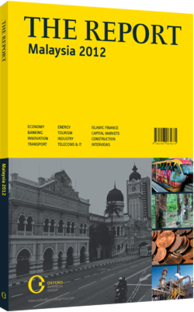Device-like grip: The medical equipment segment is set to go from strength to strength
As the global population cruises past the 7bn mark, the demand for health care goods and services continues to grow through bull and bear markets. With the annual global market estimated by the Malaysian Investment Development Authority (MIDA) at $300bn and growing at a rate of 10%, the medical devices industry provides a competitive yet attractive opportunity for Malaysian companies. Due to the highly technical and diverse nature of the sector, medical instrument manufacturing also dovetails nicely with the government’s promotion of value-added industries able to tap into the country’s increasingly skilled labour force.
MARKET PLAYERS: Membership of the Association for Malaysian Medical Industries has expanded from 17 companies in 2006 to 40 in 2012. In total there are around 180 medical device manufacturers operating in the country, the majority of which are small and medium-sized enterprises producing medical gloves and other disposable products. At the other end of the scale are high-value production companies, among them several multinationals, including Ambu, B Braun, C R Bard, Ciba Vision, Meditop, St Jude Medical, Symmetry Medical, Accelent and Teleflex. The majority of these larger firms export the bulk of their output, which includes orthopaedic products, surgical instruments, medical electrodes, safety intravenous cannulae, pacemakers, defibrillators and ophthalmic lenses. MIDA estimated the value of Malaysia’s medical devices market at $900m in 2011, with the potential to expand to $1.7bn by 2015. The government has also announced seven entry point projects related to the sector which are intended to add RM17.1bn ($5.5bn) in revenue, RM11.4bn ($3.7bn) in GNI and generate 86,000 jobs by 2020.
STANDARDS: The government is hoping to boost medical device exports through incentive schemes and by ensuring products meet strict international standards. It targeted the few companies operating in the country not already adhering to international standards by passing the Medical Device Act in 2012, which requires the registration of all medical devices imported or sold in the country. Those forgoing international standardisation invite negative implications for their own businesses and reflect negatively on the reputation of Malaysian medical suppliers. In trades such as medical equipment, buyers have little patience for those operating outside of accepted standards.
DOMESTIC DRIVERS: Government reform efforts and the promotion of medical tourism have had a positive influence on the rapid advancement of the private sector, which now accounts for 60% of the industry’s revenue. Private medical facilities continue to crop up, bringing with them continuous demand for new equipment, as well as the long-term maintenance, upgrade and replacement of all manner of medical equipment.
There are still some opportunities that could foster further sector growth. Chief among these is liberalisation of the manner in which government medical facilities procure their equipment and supplies. Under the current system the government chooses a single supplier for a particular product and then deals with this company exclusively. Opening these deals up to competition would enable more firms to become active in the public sector, and healthy competition for contracts could bring down costs and improve service.
EXPORTS: In terms of exports, many Malaysian firms are pursuing opportunities in emerging markets, such as Indonesia, Myanmar and Vietnam. These complement traditional high-spending markets, such as Singapore, Japan, the US and Europe. Due to their high per-capita health care spending, these traditional markets should remain strong even in the face of the global economic downturn, due to the relatively recession-proof nature of medical care. In 2011 medical device exports were valued at $3.8bn by MIDA, 78% of which were accounted for by low-end products, such as medical gloves and catheters, leaving around $484m in exports of instruments and appliances used in medical, surgical, dental or veterinary sciences, $114m in ophthalmic lens exports and $74m in orthopaedic appliances.
You have reached the limit of premium articles you can view for free.
Choose from the options below to purchase print or digital editions of our Reports. You can also purchase a website subscription giving you unlimited access to all of our Reports online for 12 months.
If you have already purchased this Report or have a website subscription, please login to continue.

